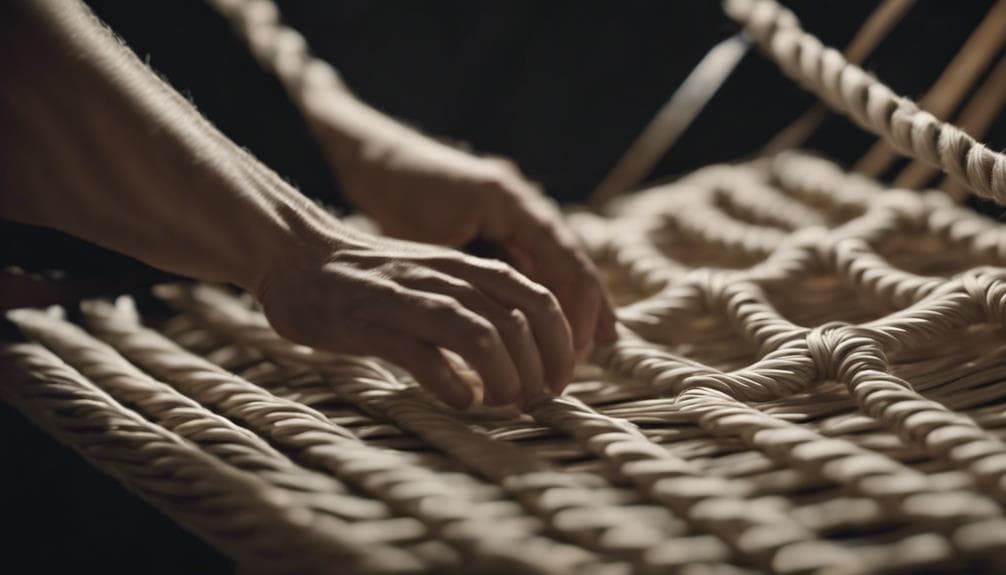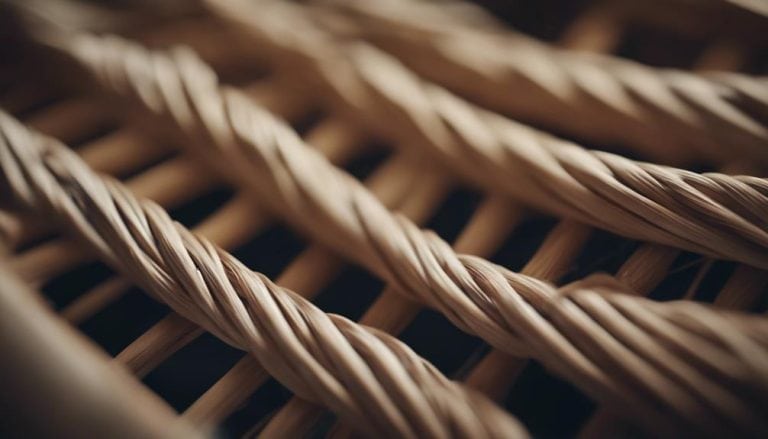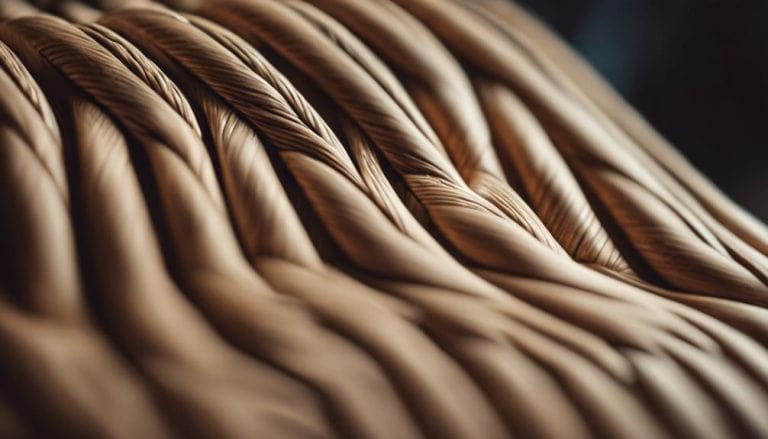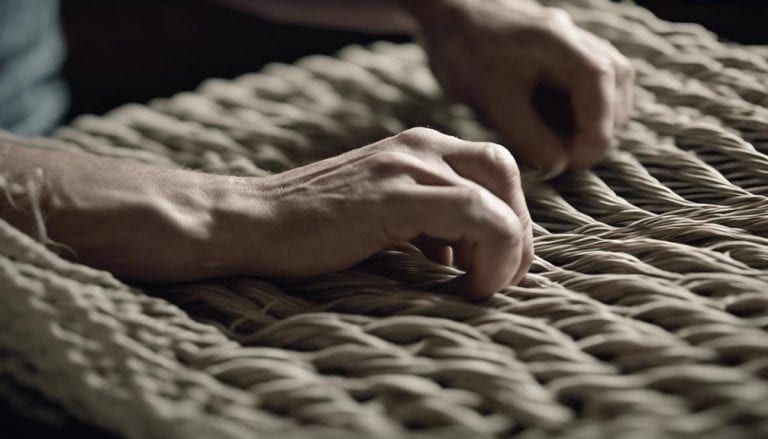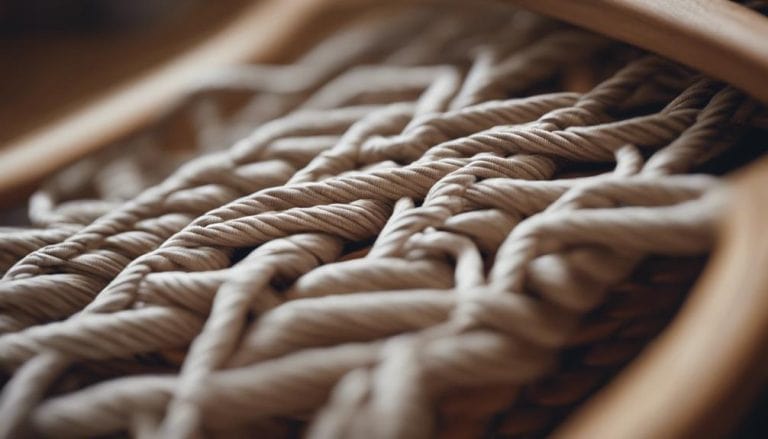Techniques in Danish Cord Seat Weaving
Intriguingly, did you know that Danish cord seat weaving dates back to the 17th century and remains a popular choice for chair seats today? Mastering the art of Danish cord weaving requires precision and attention to detail.
Each step plays a crucial role in the outcome, from securing the warp to the rails to achieving a symmetrical pattern. Understanding these techniques can elevate your craftsmanship and ensure a successful weaving project.
In Danish Cord Seat Weaving, various techniques are used to create intricate patterns using a cord. These techniques involve weaving the cord in specific patterns to form a durable and visually appealing seat.
Key Takeaways
- Cord tensioning, weaving needles, and knot tying are essential for sturdy and uniform Danish cord seats.
- Documenting patterns, assessing frame conditions, and mastering weaving techniques ensure successful seat weaving.
- Maintenance tips include regular cleaning, repair techniques, and proper care for the longevity of Danish cord seats.
- Utilize appropriate tools, address issues promptly, and handle with care to maintain pristine condition of Danish cord seats.
Basic Tools for Danish Cord Weaving
The essential tools are paramount for a successful and efficient weaving process when embarking on Danish cord seat weaving. Cord tensioning is crucial for achieving a uniform and sturdy seat. A weaving needle proves invaluable, deftly guiding the cord through intricate spaces in the chair frame, ensuring a neat finish.
Weaving speed is enhanced by the convenience of scissors, swiftly trimming the Danish cord to the required length without disrupting the flow of the process. Knot tying proficiency is key to secure the cord at the start and end points, maintaining structural integrity.
Cord wrapping around the chair rails demands precision, where a hammer becomes indispensable for securely tacking the cord. Nails play a vital role, anchoring the Danish cord firmly to the chair frame, providing stability throughout the weaving journey. With these tools by my side, each weaving session becomes a harmonious blend of technique and craftsmanship.
Preparing the Chair Frame
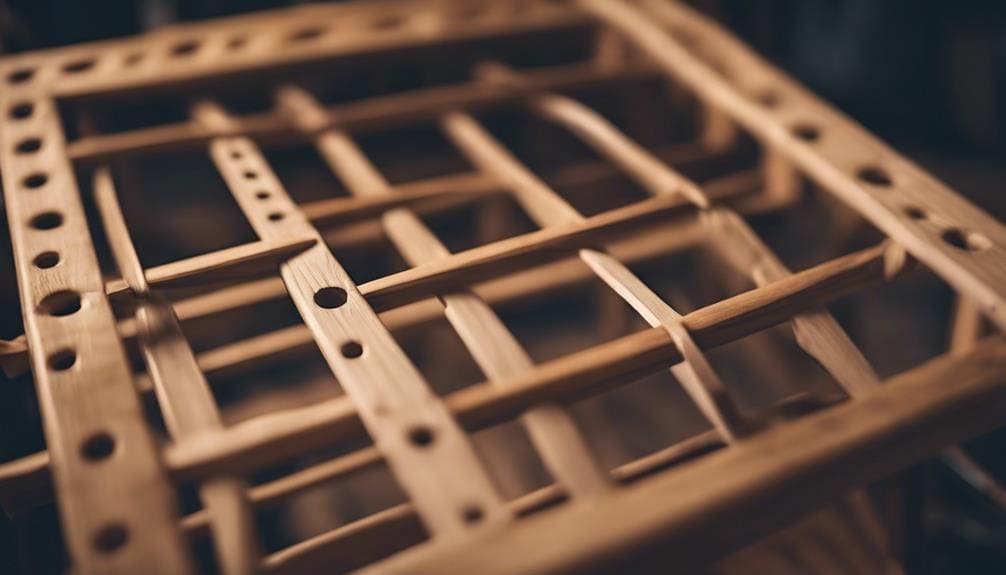
To prepare the chair frame for re-weaving, carefully remove the original rope cord while preserving the nails/hooks as reference points for the upcoming weaving process. Preserving the frame’s integrity is crucial to ensure the new Danish cord seat is as sturdy and durable as the original. By keeping the nails/hooks intact, you maintain the chair’s structural integrity, making it easier to replicate the original weave pattern accurately.
Chair Frame Preparation Table
| Step | Details |
|---|---|
| Remove Old Cord | Cut away the original rope cord meticulously. |
| Preserve Nails | Keep nails/hooks intact for reference points. |
| Document Weave | Take pictures and notes to replicate pattern. |
| Assess Condition | Confirm that the frame is sturdy for new weaving. |
| Ensure Stability | Confirm frame is sturdy for new weaving. |
These initial steps set the foundation for the intricate weaving process ahead. By paying attention to these details, you set yourself up for success in weaving the Danish cord seat with precision and care.
Starting the Weaving Process

Commence the weaving process of the Danish cord by securely tacking it to the inside of the left front rail for stability. This initial step is crucial as it lays the foundation for the weaving endeavor. The cord is held securely by ensuring a firm attachment at the start point, allowing for a smoother weaving process.
As I begin weaving, I pay close attention to tension control. Consistent tension is key to achieving a uniform and visually appealing weave. Using a wood block to maintain tightness while wrapping the cord around the front and back rails helps achieve this desired tension. It is essential to be mindful of potential weaving mistakes throughout the weaving process.
These can include uneven spacing, loose cords, or irregular patterns. By staying attentive and correcting any errors promptly, the final result will be a beautifully woven Danish cord seat. As I progress from the front rail weave to the back rail, I ensure that the spacing remains consistent for a cohesive look. Remember, the front rail weave provides crucial support for the weaving structure, making it a fundamental part of the process.
Creating a Traditional Pattern

Continuing the weaving process from the front rail to the back, I now focus on incorporating a traditional Danish cord pattern like the envelope weave for added strength and visual appeal. The envelope weave not only creates a distinctive overlapping pattern on the seat but also enhances the overall durability of the weave.
Here are some key points to consider when creating a traditional pattern in Danish cord weaving:
- Color Variations: Experiment with different shades to add depth and interest to the pattern.
- Intricate Designs: Incorporate complex weaving techniques to showcase the artistry of Danish cord weaving.
- Modern Interpretations: While traditional patterns are essential, don’t be afraid to infuse modern elements for a unique touch.
- Creative Twists: Add your flair to the design by incorporating personal touches or innovative weaving methods.
- Craftsmanship: Pay attention to the details to ensure the pattern highlights the skill and dedication put into the weaving process.
Advanced Weaving Techniques
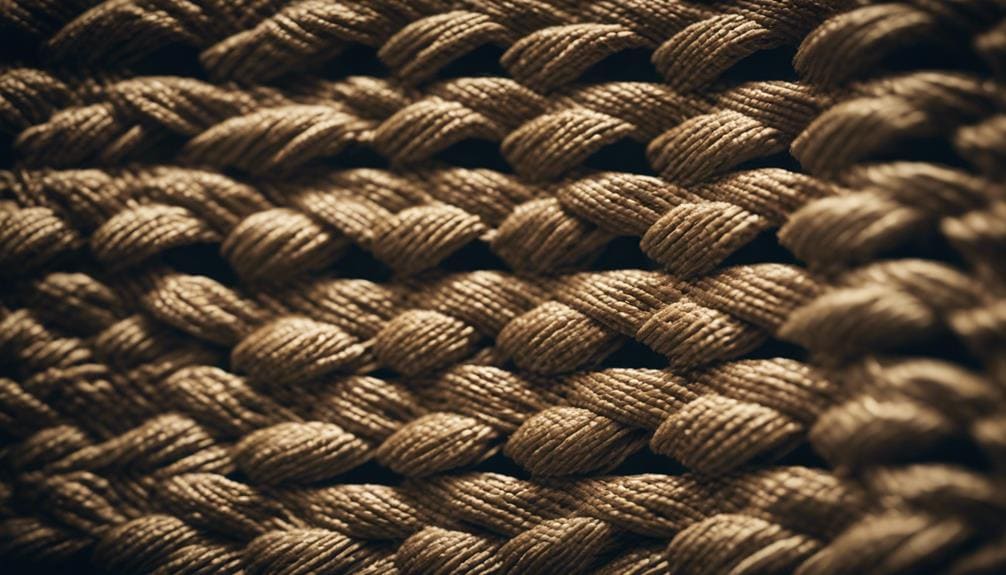
Utilizing intricate patterns like the woven envelope pattern, advanced Danish cord seat weaving techniques showcase the artistry and craftsmanship synonymous with iconic designs. In these advanced techniques, achieving consistent tension throughout the weaving process is paramount to ensure a flawless and visually pleasing outcome. Weavers skillfully employ weaving needles to navigate the cord through tight spaces, allowing for the creation of complex patterns that define the Danish cord aesthetic.
One notable aspect of advanced Danish cord weaving is the strategic alternation of the weave direction. By changing the direction of the weave, weavers add depth and texture to the seat, elevating the overall design to new heights.
This technique enhances the visual appeal of the woven seat and provides a tactile experience that complements the aesthetics of Danish design classics. In mastering these advanced weaving techniques, weavers immerse themselves in the intricate world of Danish cord seat weaving, where precision and attention to detail reign supreme.
Finishing and Securing the Cord
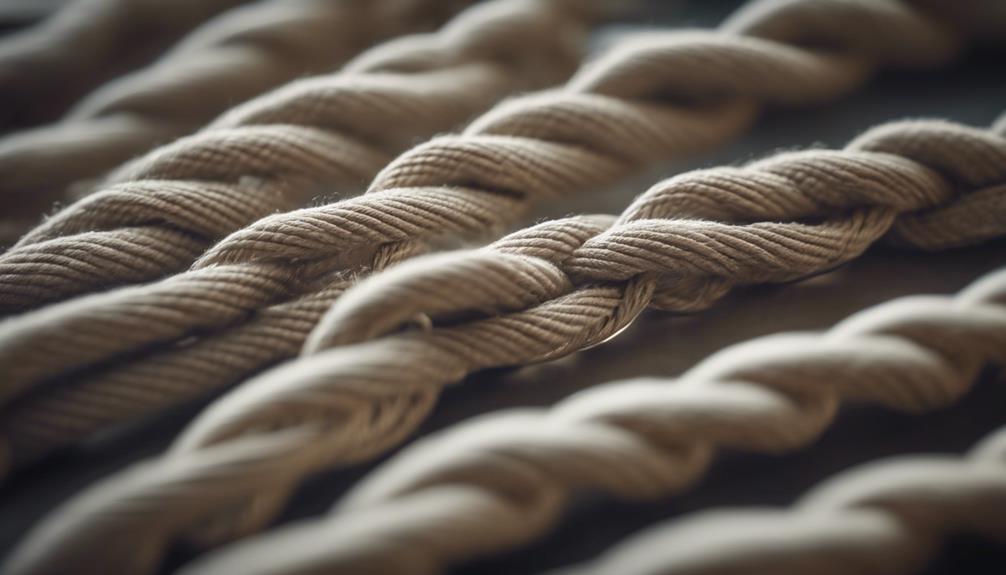
As we near the completion of the intricate Danish cord seat weaving process, ensuring a polished final look involves expertly finishing and securing the cord ends. To achieve a professional finish, attention to detail is key.
Here are some essential techniques to secure and finish the cord effectively:
- Secure the loose end: Whether using glue or a knot, securing the open end is essential to prevent unraveling and maintain durability.
- Neatly tuck the loose end: Tuck the loose end under the woven rows meticulously for a clean and seamless appearance.
- Strategic nail placement: Double up on nails strategically to evenly distribute tension without overcrowding the weaving.
- Trim excess cord: Carefully trim any excess cord once the weaving is complete to ensure a tidy and polished look.
- Allow for drying time: If using glue, allow it to dry completely before using the chair to establish a strong bond that stands the test of time.
These securing techniques and finishing methods are crucial for a well-crafted Danish cord seat that is visually appealing and durable.
Maintenance Tips for Danish Cord Seats
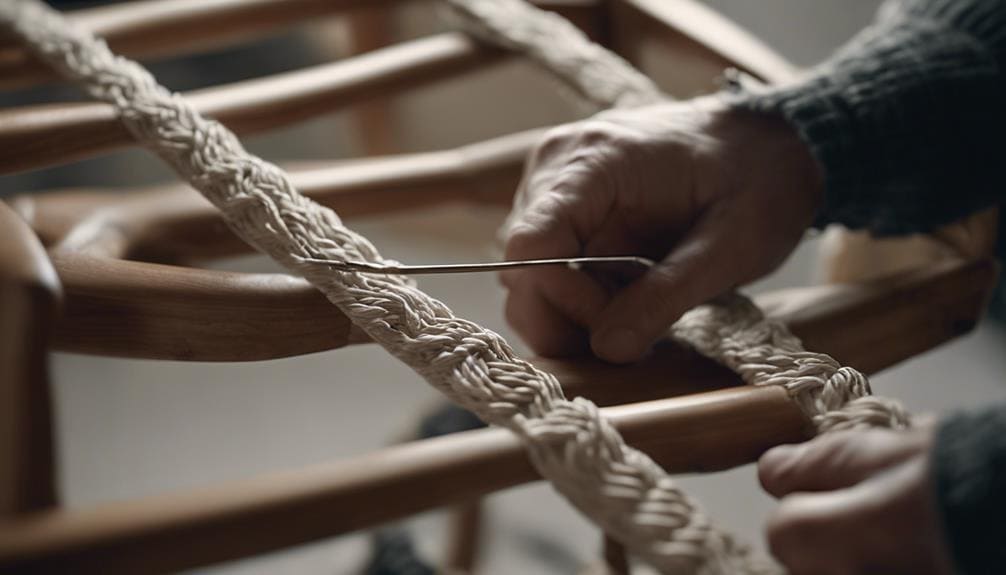
Implementing proper maintenance practices is essential for Danish cord seats’ optimal longevity and visual appeal. Danish cord seats are known for their durability and strength, often lasting for generations when well cared for. Quality Danish cord typically has a protective wax layer that helps prevent staining and enhances its longevity.
Regular dusting and occasional vacuuming are recommended to maintain the appearance of Danish cord seats to remove dirt and debris that can accumulate over time. It is crucial to avoid placing Danish cord seats in direct sunlight to prevent fading and weakening of the material.
In case of spills or stains, gently blotting the affected area with a damp cloth and mild soap can help clean the seat; ensure the air dries completely before using it again. When considering maintenance, color selection affects how well the seat hides dirt and stains. Additionally, understanding repair techniques can help address wear and tear over time, ensuring your Danish cord seats stay pristine.
Frequently Asked Questions
How Do You Weave a Danish Cord?
Weaving Danish cord involves basic steps like wrapping and guiding the cord with weaving tools. I ensure consistent tension for a secure weave. It’s vital to maintain proper spacing for a neat finish. Trim excess cord for a clean look.
What Is the Nail Spacing for Danish Cord Weaving?
The nail spacing in Danish cord weaving is key for tension control. Weaving techniques hinge on this detail. It’s like finding the perfect beat in a song; each placement ensures cord maintenance and symmetry.
What’s the Difference Between Laced and Unlaced Danish Cord?
Regarding Danish cord, laced offers a woven appearance, while unlaced gives a smoother look. Weaving techniques differ between the two styles, with laced being more intricate and time-consuming, adding a traditional touch to furniture.
How Is Danish Paper Cord Made?
Creating a Danish paper cord is a meticulous process that transforms sustainable material into a durable rope. The plies are twisted together, forming a versatile cord known for its strength and flexibility, perfect for intricate weaving patterns.
Conclusion
After mastering the techniques of Danish cord seat weaving, it is fascinating to note that a skilled weaver can complete a chair seat in just a few hours. This intricate craft requires attention to detail and precision, but the result is a beautifully woven seat that is durable and visually appealing. With practice and patience, anyone can learn to create stunning Danish cord seats that will stand the test of time.

